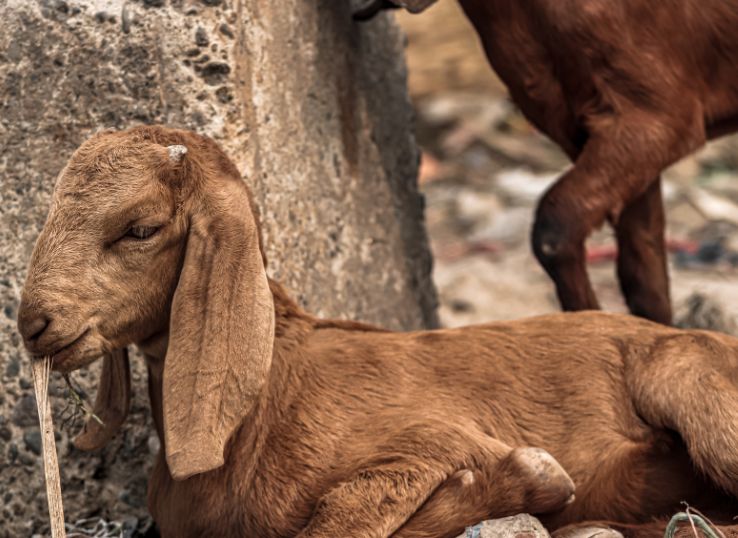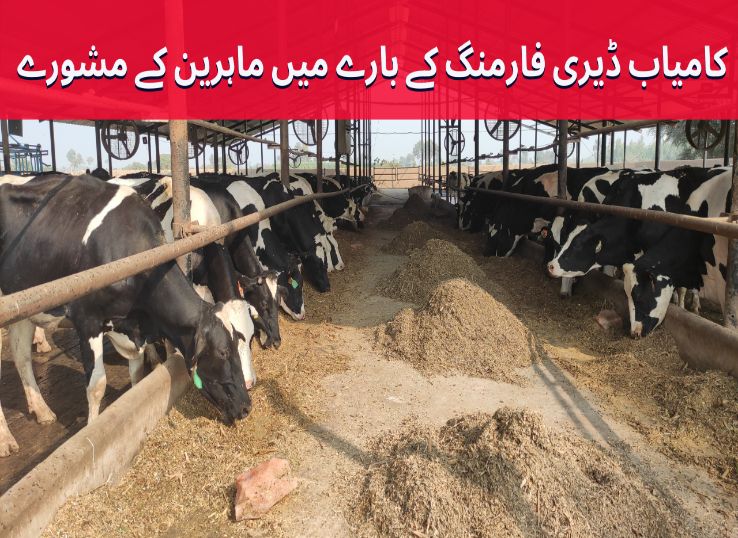Beetal Goat (Complete Breed Profile plus Farming Tips)
Last Updated on October 20, 2022 by Dr. Ali Shahid
A Beetal goat is an Indian and Pakistani breed used to produce milk and meat. It bears resemblance to both the Jamnapari goat and the Malabari goat. This breed of goat produces a lot of milk, making it one of the most productive goat breeds.
Furthermore, it is a very suitable breed for producing meat for commercial purposes. This breed is very suitable for farming inside a farm where there is limited or no area for grazing.
Aside from that, they are also very adaptable to any climate or environment that they encounter. Their large size and ability to produce fine leather like velour, suede, and chamois make their skin a high-quality product for clothes, shoes, and gloves.
This breed is widely used in the subcontinent for the improvement of local goats. A great advantage of these goats is that they thrive on stall feeding, so they are best suited for intensive goat farming.
Usually, the Beetal goat and Malabari goat are compared for their testicles, among other characteristics. Generally speaking, this is a reliable breed of goat. Here’s an article about this farmer’s choice of goat.

Origin and History of Beetal Goat
Beetal goats are not known for their history other than their descendants of Indian goats. The Punjab region of India and Pakistan is believed to be the home of this breed. Their milk and meat make them an important breed in these countries.
Appearance
It is a large breed but a little smaller than Jamunapari and is a good dairy breed. As far as coat color goes, it can be predominantly black (about 90%) or brown (10%), and there can also be spots of varying sizes throughout the coat.
It has long, flat ears that are curled at the ends and droop from the top. Each sex has the same thick, medium-sized shape. A thick, medium-sized horn is carried horizontally by both sexes with a slight twist directed upwards and backward.
A male has a marked beard, while a female does not have a beard. Compared to the rest of the body, the tail is very small and thin.
A large and well-developed udder is seen as well as big conical teats on the udder. The average weight of an adult buck is 50-60kg while that of an adult doe is 35-40kg. Female beetals are about 71cm long and males are about to 86cm long.
Color Variation
Beetal goats are found in black, brown, red, or white colors, sometimes pied, spotted, or mottled. There are different pure strains with different colors:
Faisalabadi: Generally black or red in color with white markings.
Makhi-Cheeni: Golden with white speckles or white with red/gold
Kali-Cheeni: It is white with black speckles all over it
Nagri: A dark brown color with black extremities on the body
Nuqri: Skin color is white with pink tones.
Feeding
When it comes to running a successful goat farm, goats must be fed fresh and nutritious food. The goat is a ruminant animal. They eat almost everything, including leaves and grass.
Beetal goats are generally high-producing meat and milk animals. They need to consume food that is of good quality, and that has a good balance of nutrients. Make sure they get enough protein and carbs.
Housing
It is generally accepted that goats prefer dry places to live in. Hence, if goats are to live a healthy and productive life, they must have a clean and dry house. A goat’s housing system can also affect the goat’s milking ability.
The conditions under which they live and the methods under which they are kept affect their production.
It is generally better to keep these goats in a grazing place during the day, but in a comfortable, dry house at night to increase their production. Furthermore, a good house will keep the goats safe from predators, germs, and diseases.
Breeding
A Beetal goat becomes mature between the ages of 12 and 15 months. The first kids are born to female goats when they’re 20-22 months old.
Every year, female goats have one pair of kids. If you want to breed Beetal goats, make sure you take proper care of the buck and the pregnant goat.
Productivity
It is a prolific breeder, with an average of 1.66 offspring per litter, and it starts kidding around the time they are 17 months old. They produce 1–3 liters (average 1.8 liters) for 150–170 days (average 161).
They can produce 330-660 lb (150-300 kg) of butterfat per year, covering 4–6 lactations. When a male reaches the age of 12 months, he is taken for meat.
Adaptability
This species is well suited to both a dry climate in Punjab and a tropical climate. It can tolerate local extremes of temperature between 35F in winter and about 108F in summer (2C–42C). They can cope well with many climatic variations in Pakistan and India.
Caring Beetal Goats
· Care of pregnant beetals
Pregnant goats should be dried off about 6-8 weeks before delivery to ensure healthy development. Put the goat in an open and clean room that is filled with straw before 15 days of expected kidding.
· Care of newborn kids
The baby’s nose, face, ear, and placenta should be cleaned after birth with a dry cotton cloth. When cleaning newborns, you have to rub them gently. The kids’ respiratory tract should be cleared if they’re not breathing.
Hold them up with their hind legs and head downwards. Rinse the goat’s udder with tincture iodine and give the kid its first colostrum within 30 minutes of birth.
Care of beetal goat after delivery
The goat’s back should be washed with water after delivery and the room should be cleaned. Give goats sugary water after delivery, and then hot feed that includes ginger, salt, metal sawdust, and sugar.
Baby goat identification symbols
They need to have a number mark on their body as a reminder, of care, recognition, and proof of ownership. This is done primarily through tattoos and tagging.
Recommended vaccines
To protect goats from Clostridial diseases, CDT and CD&T vaccinations are given. It is important to give a tetanus vaccination to a newborn at the time of birth.
The booster vaccination is given when the child is 5-6 weeks old, and then it is given once a year after that.
Conservation Status
The Indian Punjab is experiencing rapid population declines due to the loss of grazing land. Between 1990 and 1997, their numbers declined by 23% and they numbered only a few thousand by 2013.
In Pakistan, beetals numbered about 2 million in 1996 and 4 million in 2006, and they are considered not at risk by the UN Food and Agriculture Organization (FAO).
Biodiversity
There are differences in traits between purebred lines. Market preferences for appearance dictate Pakistani breeders’ breeding priorities.
A Faisalabad breeder focuses on udder shape, ear size, teat size, and body length. While a Makhi-Cheeni breeder focuses on body shape, color, height, and nose shape. Nose shape is the top priority for Nuqri and Rahim Yar Khan breeders.
Local markets love these physical traits when there are no production records. The general population suffers genetic erosion from crossbreeding due to a lack of respect for native breeds, outside of dedicated breeders.
Tips for Successfully Running a Beetal Goat Farm
- Business plan or report for Beetal goats that includes all expenditures. This includes the initial investment, the shed/house cost, and health insurance costs.
- You should find/enquire about local goat breed sellers before buying in bulk (a flock) to make sure transportation will be easy. Select disease-free and quality Beetal goats for better rearing. Negotiating with the seller can save you a lot of money.
- It’s a good idea to bring a veterinary doctor along to choose healthy goats. You’ll avoid sick goats and old goats.
- Make sure your farm is clean and disinfected before getting goats.
- Make sure all animals get their initial vaccinations once they arrive on your farm.
- Green fodder crops can be grown to reduce feed costs in stall-fed or semi-stall-fed Beetal goat systems.
- Make sure you sell the Beetal goats in batches rather than once.
- To maintain the health of the flock, sick animals should be separated from the flock.
- Get a good feed plan because goats gain good weight with balanced nutrition/feed in a shorter period.
- Newborn kids and pregnant female goats should receive more care in terms of nutrition and health examinations.
- Ensure that any farm equipment such as feeders/drinkers is clean and dry every alternate day.
- Drought-related grazing can be solved by making silage from green fodder crops.

Dr. Ali Shahid is a veterinarian by profession and CEO at provets. He loves to treat animals and has great expertise in veterinary products. Our aim is to provide the best information related to your animal health.






